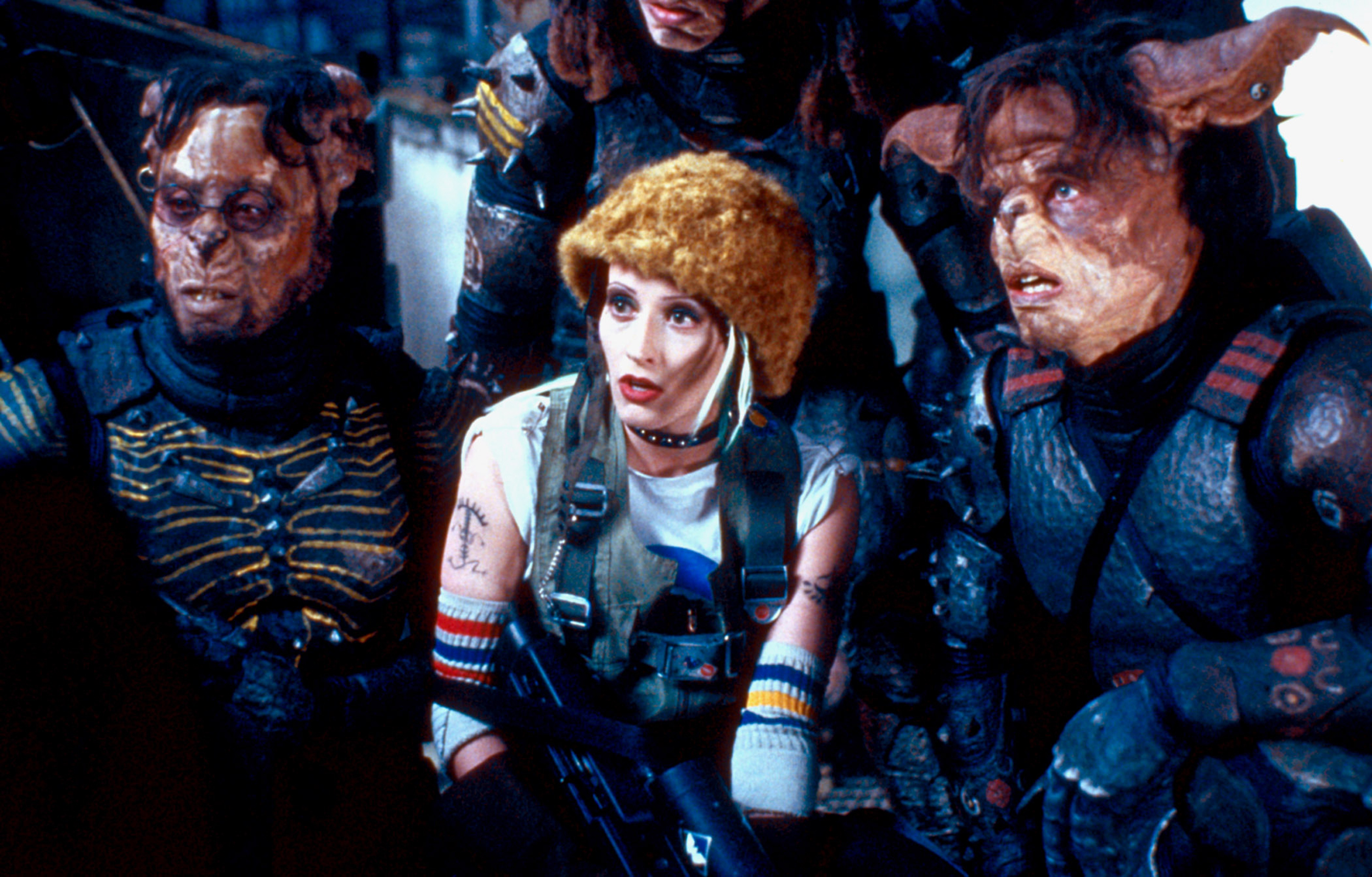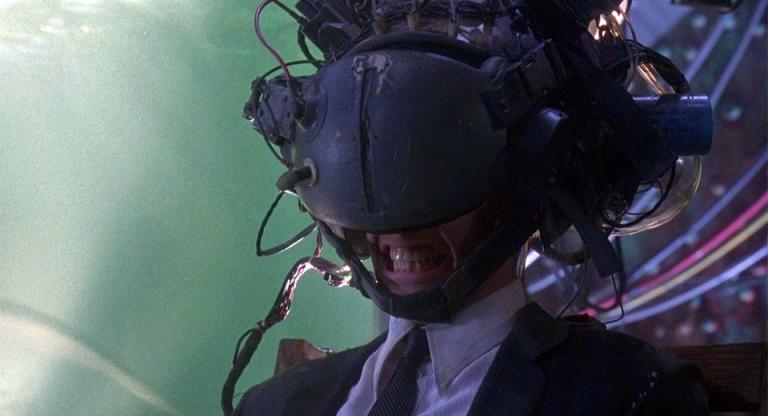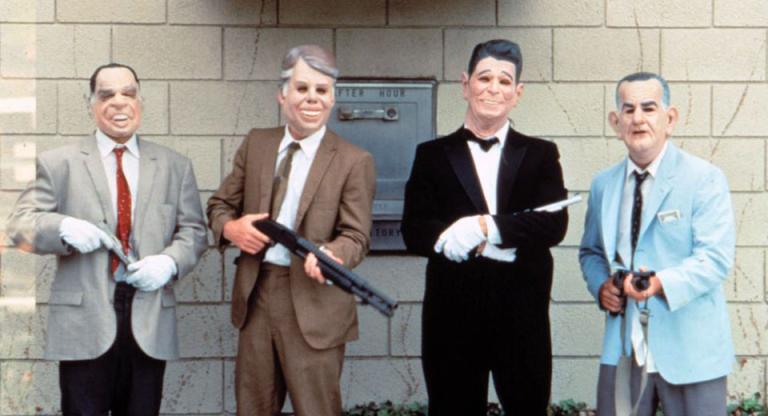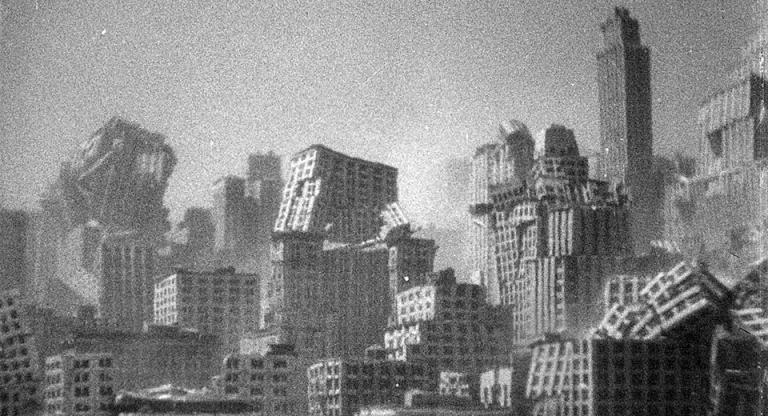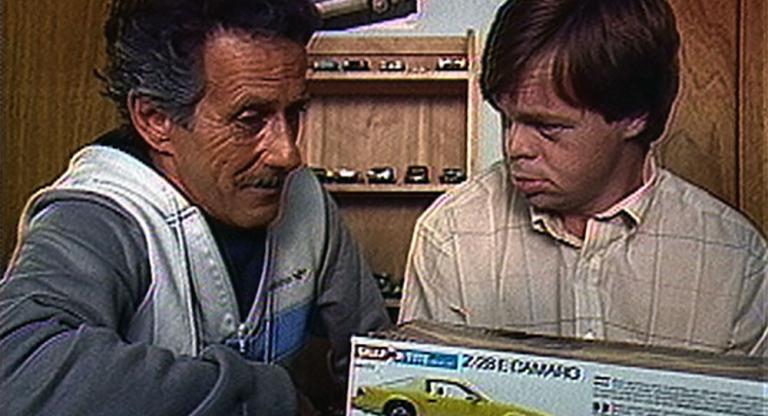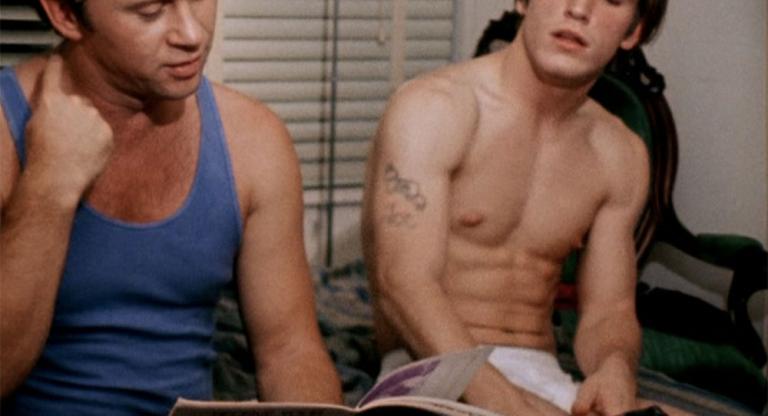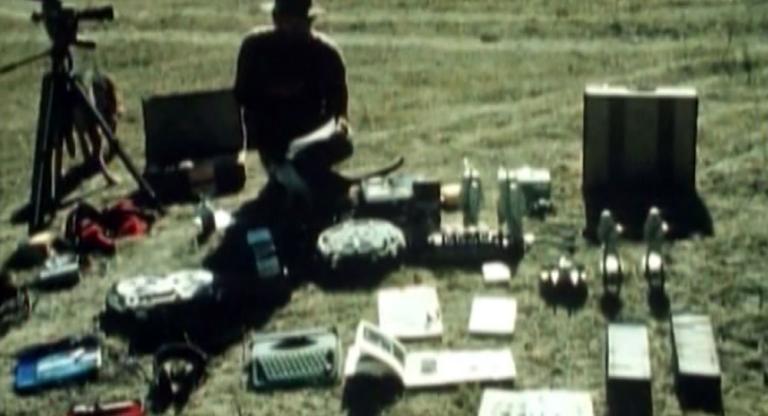What could movies learn from comics? Ignoring what’s beyond the frame; graphic boldness; loud use of primary and secondary colors; intense closeups; deemphasis of coverage and continuity; exploiting the nonsensical narrative dislocations of the juvenile brain; plots children can understand, moralities and vibes they cannot.
What have movies learned from comics? Diagrammatic, accumulative crossover events; infantile gratification-delivery; Nietzschean resentment; grander methods of subordinating talent to institutional guidelines (a return to the studio system, with even less autonomy for “artists”); immersive, ecosystemic approaches to marketing; foregrounding of immortal IP.
Tank Girl (1995) took the right cues from its source material, a British comic published at one point by an imprint of Big-Two goliath DC. Rachel Talalay’s adaptation presents screaming onomatopoeias not as stand-ins for sound, but as stimulating graphic objects. Similarly, she hurls Ben-Day dots at viewers with Lichtensteinian flourish. Her film is squarely in the center of a three-way Venn diagram between movies, comics, and cartoons. Tank Girl failed critically and commercially, a badge of honor for a mid-90s postapocalyptic-feminist-punk carnival, even if it cost Talalay and star Lori Petty a chance at further studio support.
In what should have been a star-making role, Petty plays Rebecca, an unabashedly horny wiseacre cut from the same endearingly irritating cloth as Bugs Bunny. She’s at war with military industrial conglomerate Water & Power, who have cornered the market on potable water since an asteroid turned the Earth barely inhabitable. (How quaint to think a heavenly body would kickstart the apocalypse and commodified water would only emerge in response.) After W&P eliminates her commune’s independent water well, the last such holdout, Rebecca teams up with the Rippers, kangaroo-human hybrid supersoldiers designed by Stan Winston Studios, to take down the evil empire with her giant phallus on wheels, a stolen tank.
“I’m in love,” says Petty the first time she sees the tank. Immediately she straddles the cannon and slides down its length in orgasmic delight. The entire film is suffused with phallic imagery, but Talalay unsettles the equation between dicks and power by putting her camera inside the film’s would-be mechanical urethras, fashioning yonic canals. Rebecca also festoons the tank with garish debris courtesy of production designer Catherine Hardwicke, whose work as director (Lords of Dogtown, Twilight) has little of the bombast of her design work on films like Three Kings and Freaked. The tank is ultimately a metaphorical and literal feminist usurpation project.
There is a perverse optimism to barren postapocalyptic landscapes in the mode of Mad Max, The Matrix, and countless others in which most vestiges of human culture have been wiped away and haphazardly mimeographed by survivors. Tank Girl hits closer to the mark with its junkheap maximalism, because plastic trinkets and confusion between Counts Chocula and Dracula will linger long after water scarcity and desertification take their hold.
